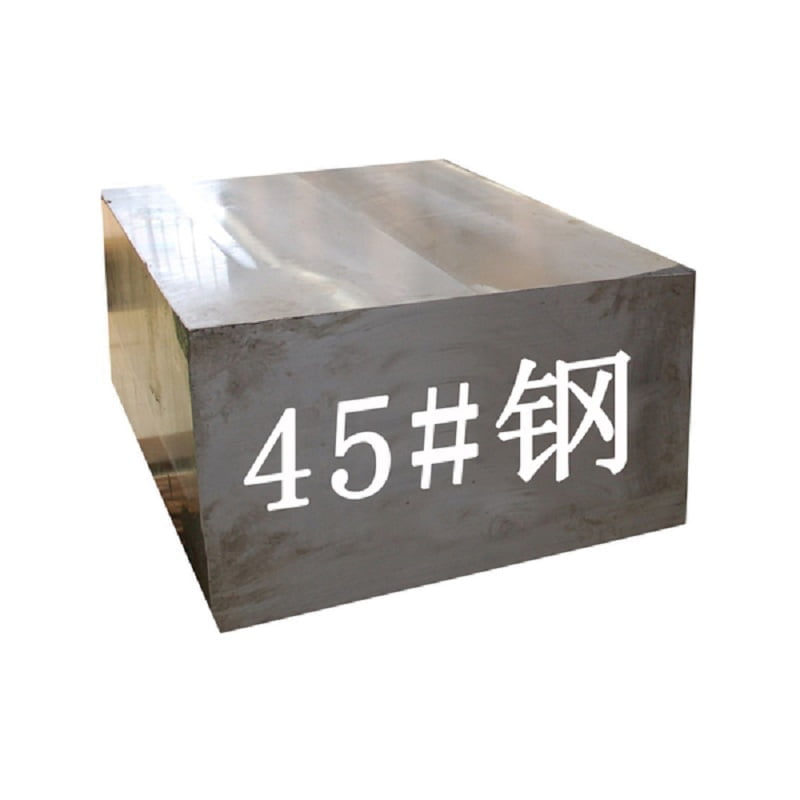
Introduction
S45C and S55C are popular grades of medium carbon steel commonly used in various engineering and manufacturing applications. This article provides a detailed comparison of S45C and S55C, utilizing tables to present their chemical compositions, mechanical properties, heat treatment responses, applications, and advantages/disadvantages for better clarity and understanding.
Chemical Composition
The chemical composition of a steel grade is crucial in determining its mechanical properties and suitability for specific applications.
| Element | S45C Composition (%) | S55C Composition (%) |
|---|---|---|
| Carbon (C) | 0.42% – 0.48% | 0.50% – 0.60% |
| Manganese (Mn) | 0.60% – 0.90% | 0.60% – 0.90% |
| Phosphorus (P) | 0.03% max | 0.03% max |
| Sulfur (S) | 0.03% max | 0.03% max |
Explanation of the Chemical Composition
- Carbon (C): The primary difference is the carbon content. S45C has a carbon content of 0.42% – 0.48%, while S55C has a slightly higher range of 0.50% – 0.60%. Higher carbon content in S55C enhances its hardness and strength.
- Manganese (Mn): Both grades contain a similar range of manganese, which is important for deoxidizing the steel and improving hardenability.
- Phosphorus (P) and Sulfur (S): These are considered impurities in steel. Both grades have the same maximum allowable percentages, which helps reduce brittleness.
Mechanical Properties
Mechanical properties are critical for determining how a material will perform under various stressors.
| Property | S45C | S55C |
|---|---|---|
| Yield Strength (MPa) | Approximately 355 MPa | Approximately 400 MPa |
| Tensile Strength (MPa) | 570 – 700 MPa | 650 – 800 MPa |
| Elongation (%) | 14% (minimum) | 12% (minimum) |
| Hardness (HB) | 170 – 210 HB | 190 – 230 HB |
Detailed Explanation of Mechanical Properties
- Yield Strength: S55C has a higher yield strength than S45C, meaning it can withstand greater stress before deforming.
- Tensile Strength: The tensile strength of S55C also exceeds that of S45C, making it more suitable for applications involving significant load-bearing.
- Elongation: Elongation refers to the ability of the steel to stretch before breaking. S45C exhibits higher elongation, indicating it can undergo more plastic deformation.
- Hardness: S55C is generally harder than S45C, contributing to its better wear resistance.
Heat Treatment Responses
Heat treatment can greatly influence the mechanical properties of carbon steels.
| Heat Treatment Type | S45C | S55C |
|---|---|---|
| Quenching | Can be hardened through quenched treatment | Can achieve greater hardness through quenching |
| Tempering | Reduces brittleness while maintaining strength | Improves toughness while retaining hardness |
Explanation of Heat Treatment
- Quenching: Both grades can be hardened by quenching, but S55C, due to its higher carbon content, tends to achieve a higher hardness after quenching.
- Tempering: After quenching, a tempering process can improve toughness and reduce potential brittleness, which is essential for components that must endure impact loads.
Applications
S45C and S55C are used in various applications based on their mechanical properties.
| Application | S45C | S55C |
|---|---|---|
| Gears | Commonly used | Suitable for high-stress gears |
| Shafts | Often used | Used in high-performance shafts |
| Machine Parts | General engineering parts | Components requiring higher strength |
| Tools | Not commonly used | Applicable for cutting tools and dies |
| Automotive Components | Often used | Critical applications (e.g., crankshafts) |
Explanation of Applications
- S45C: Its balanced strength and machinability make it suitable for general engineering applications, such as gears and shafts.
- S55C: The higher carbon content lends itself to applications demanding greater strength and hardness, like cutting tools and high-performance automotive components.
Advantages and Disadvantages
Both S45C and S55C have unique advantages and disadvantages.
| Aspect | S45C | S55C |
|---|---|---|
| Advantages | – Good machinability | – Higher strength and hardness |
| – Cost-effective for general applications | – Excellent wear resistance | |
| – Balanced properties | – Suitable for high-stress environments | |
| Disadvantages | – Lower strength compared to S55C | – Reduced machinability |
| – Limited hardness | – Higher cost compared to S45C |
Detailed Explanation of Advantages and Disadvantages
- S45C Advantages: Its good machinability and cost-effectiveness make it suitable for various general engineering applications.
- S45C Disadvantages: The lower strength and hardness may limit its effectiveness in high-stress applications.
- S55C Advantages: The enhanced strength and wear resistance make it suitable for demanding applications.
- S55C Disadvantages: Increased hardness can make it more challenging to machine, potentially raising production costs.
Conclusion
Choosing between S45C and S55C requires careful consideration of the specific requirements of the application. S45C provides a balance of strength and machinability, making it suitable for general engineering use, while S55C’s higher strength and hardness make it ideal for applications requiring enhanced performance under stress and wear. Understanding the differences in chemical composition, mechanical properties, heat treatment responses, and applications will aid engineers and manufacturers in making informed material selections tailored to their project needs.
